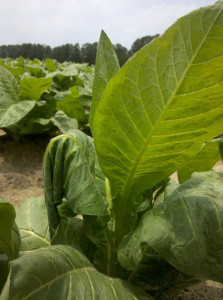Insects – Stink Bugs
go.ncsu.edu/readext?66335
en Español / em Português
El inglés es el idioma de control de esta página. En la medida en que haya algún conflicto entre la traducción al inglés y la traducción, el inglés prevalece.
Al hacer clic en el enlace de traducción se activa un servicio de traducción gratuito para convertir la página al español. Al igual que con cualquier traducción por Internet, la conversión no es sensible al contexto y puede que no traduzca el texto en su significado original. NC State Extension no garantiza la exactitud del texto traducido. Por favor, tenga en cuenta que algunas aplicaciones y/o servicios pueden no funcionar como se espera cuando se traducen.
Português
Inglês é o idioma de controle desta página. Na medida que haja algum conflito entre o texto original em Inglês e a tradução, o Inglês prevalece.
Ao clicar no link de tradução, um serviço gratuito de tradução será ativado para converter a página para o Português. Como em qualquer tradução pela internet, a conversão não é sensivel ao contexto e pode não ocorrer a tradução para o significado orginal. O serviço de Extensão da Carolina do Norte (NC State Extension) não garante a exatidão do texto traduzido. Por favor, observe que algumas funções ou serviços podem não funcionar como esperado após a tradução.
English
English is the controlling language of this page. To the extent there is any conflict between the English text and the translation, English controls.
Clicking on the translation link activates a free translation service to convert the page to Spanish. As with any Internet translation, the conversion is not context-sensitive and may not translate the text to its original meaning. NC State Extension does not guarantee the accuracy of the translated text. Please note that some applications and/or services may not function as expected when translated.
Collapse ▲Biology
Several species of stink bugs occur in North Carolina. The most common are the green stink bug (Acrosternum hilare), the southern green stink bug (Nezara viridula), and the brown stink bug (Euschistus servus). Recently, a new stink bug, the brown marmorated stink bug (Halyomorpha halys), was introduced and has become common in the eastern United States. The brown marmorated stink bug was first detected in 2001 near Allentown, Pennsylvania. During summer 2010, populations in eastern Virginia and Pennsylvania were very high. Brown marmorated stink bug has been detected in North Carolina but has yet to reach the extremely large population levels see in nearby states.
Barrel shaped stink bug eggs are laid in clusters. Stink bug nymphs resemble adult stink bugs in shape but may very in color and are wingless. Nymphs progress through 5 instars before molting to adults. Both nymphs and adults are highly polyphagous, meaning they feed on a wide range of host plants. Stink bug adults are also highly mobile and may move long distances within and between fields. This mobility makes stink bugs very difficult to sample.
As the use of scheduled, broad spectrum insecticides in field crops has decreased (most notably in cotton), stink bugs populations have increased across the farmscape.
Several predatory bugs, which are beneficial in North Carolina, can be confused with stink bugs. The most common include the spined solider bug (Podisus maculiventris) and the wheel bug (Arilus cristatus). The eggs of these insects are similar in appearance to those of some stink bugs and are also laid in clusters. These beneficial insects feed on caterpillars, aphids, and other soft bodied insects in tobacco and should be conserved.

Tobacco plant with leaf injured by stink bug feeding, Raeford, NC. Photo: H. J. Burrack
Thresholds and Management
Stink bugs are a minor pest in tobacco and do not typically justify treatment. It is more important to understand what stink bug injury looks like so it is not confused with other damage (pathogens or insects) than to assess whether treatment is necessary. Stink bugs feed on the mid ribs of tobacco leaves, which then wilt and bend. This damage occurs primarily on upper stalk leaves. If plants are healthy and there is adequate moisture, leaves should recover. If they remain wilted, however, there is a chance that leaves will scald in the sun. These should not, however, render leaves unmarketable, and damage is typically infrequent even when large stink bug populations are present.


